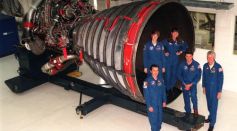Tags: Habitable exoplanet

NASA’s Chandra X-Ray Observatory Utilizes Star Radiation To Hunt for Habitable Exoplanets: How Does This Help Know if Planet Can Sustain Life?
Potentially Habitable Exoplanet Discovered Just 40 Light Years Away; Rare Exo-Venus World Possesses Earth-Like Temperature
"Superhabitable" Exoplanets May Be Better Than Earth

Other Stars Can Support Up To Seven Habitable Planets
The Discovery of Star “cooking” Its Baby Planets Sheds Light on Finding Habitable Exoplanets in Space
Scientists Begin To Explore The Possibility Of Human Life In Proxima B
Most Popular

If the Sun Were a Basketball, How Big Would the Earth Be? Space Scale Comparison Perfect for Kids

10 Powerful Brain-Boosting Foods Backed by Nutrition Science to Enhance Cognitive Function

7 Climate Change Animals Showing Incredible Species Adaptation and Thriving in a Warming World

Top 10 Invasive Species List: Shocking Biodiversity Threats Ravaging Ecosystems Worldwide




